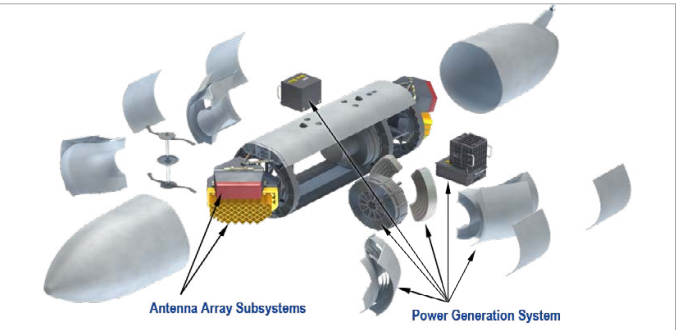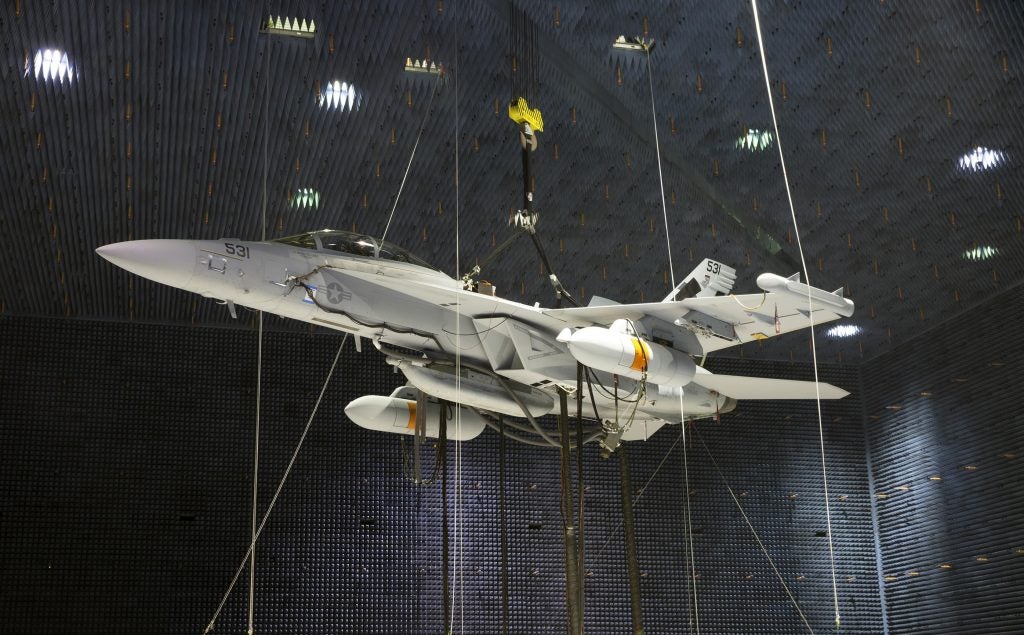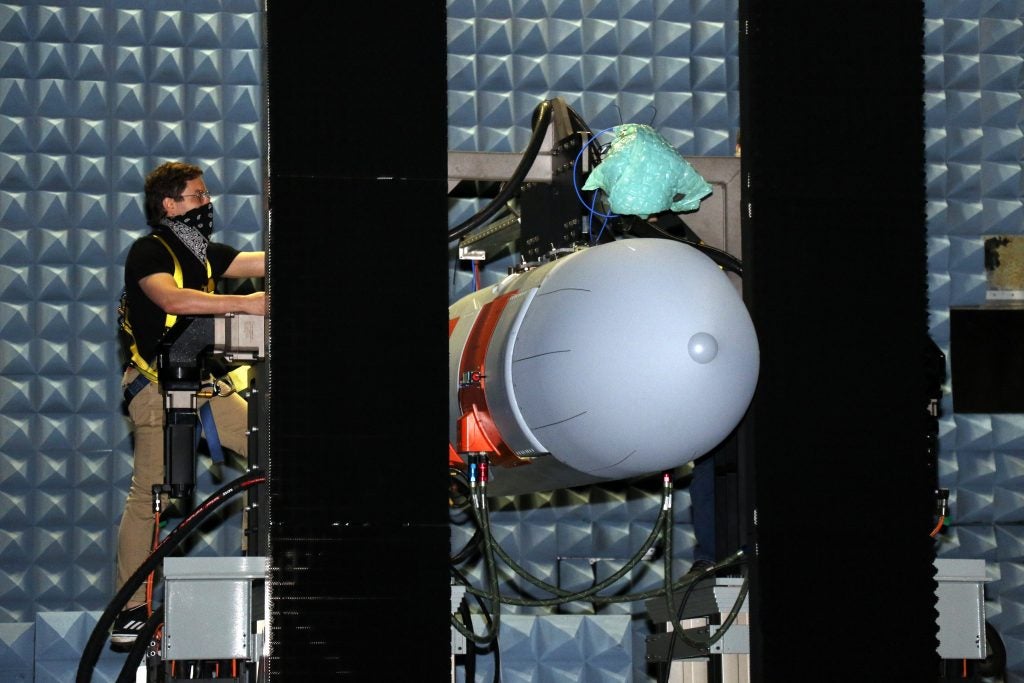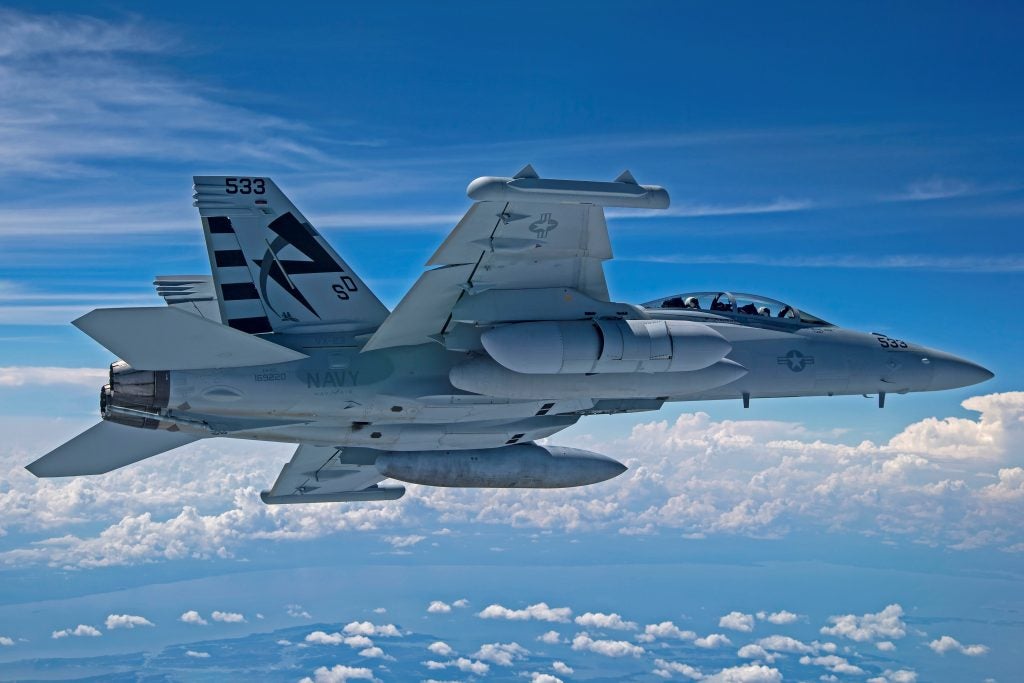Royal Australian Air Force Aviators Conduct NGJ-MB Training with US Navy Sailors
U.S. Navy sailors alongside Royal Australian Air Force pilots have started their second round of training to familiarize themselves with the AN/ALQ-249 Next Generation Jammer Mid-Band (NGJ-MB) pods. The training event marks a steady build-up of skills in handling and maintaining the system ahead of the jammer pod’s fielding in the coming years. The latest event also marked the first time U.S. Navy maintainers worked with maintainers from the Royal Australian Air Force, a future operator of the NGJ family of pods.
The six-week training event lasted from February to March this year and involved critical maintenance tasks on the Raytheon-made NGJ-MB pods. According to a NAVAIR press release, members went through step-by-step procedures following the jammer’s manual which involved the removal and installation of 60 components including the jammer arrays, pumps, and actuators. This hands-on training event allows the fleet members to provide valuable input to the government and industry product support teams.
This event was the first time Royal Australian Air Force airmen had hands-on experience with the jammer pod. “It’s really invaluable for us Aussies to be here now, and while we won’t get the pods for a few years, we can take [the training] back and highlight the issues now, so we’re more prepared for it,” RAAF Leading Aircraftmen Adrian Bailey said. “It’s very different from how we operate the ALQ-99 pods and it’s good to get a head start.”
The Next Generation Jammer

The Next Generation Jammer replaces the U.S. Navy’s venerable ALQ-99 Tactical Jamming System (TJS), which has been in service with the Navy since the Vietnam War. The ALQ-99 originally equipped the Navy and Marine EA-6B Prowler and Air Force EF-111 Raven, today the system is only used on the EA-18G Growler. The ALQ-99 is said to be capable of carrying out various electronic warfare missions such as Electronic Attack (EA) and Electronic Protection (EP), the ALQ-99 system is separated into two pods which allow the equipped aircraft to cover the low and high radar spectrums. This allows the aircraft to jam anything from long-range surveillance to Surface to Air Missile fire control radar systems. Although the ALQ-99 has gone through several iterations, the system has hit the limits of its design, and the internals of the pod have fallen behind the pace of adversarial EW and radar capabilities.
As the successor to the ALQ-99, the NGJ will be operated as three different pods that work in the low-, mid-, and high bands. When equipped with the NGJ, the EA-18G will be used to carry out missions such as stand-off/in escort jamming, modified escort jamming, suppression of enemy air defenses, signal and electronic intelligence gathering, communications jamming, and supporting the destruction of enemy air defenses.
These requirements for the NGJ were driven by advances in adversarial systems. In the past, the ALQ-99 was relegated to mainly carrying out Electronic Attack (EA) and Electronic Protection (EP) duties against threats that were slow to change. Today, the proliferation of commercial solid-state electronics in potential-enemy hands has increased the number of threats within the EW spectrum, from newer radars that support Surface Air systems to GPS and theater-wide communications jamming. Together these threats have increased the demands on aircraft like the Growler.

To survive in the future EW environment, the NGJ will improve on the ALQ-99 TJS by focusing on three key aspects;
- Increasing the effective isotropic radiated power (EIRP)
- Switching to an Open Systems Architecture (OSA)
- Taking advantage of advances in solid-state electronics
Recent advances in the miniaturization of electronics will allow the NGJ to be packed with more powerful electronics, the system will have access to a multitude of jamming techniques that can be loaded onto the pod with software updates. This is in contrast to the ALQ-99 which would be loaded with a limited number of techniques hardcoded onto Application-Specific Integrated Circuits (ASIC) chips. These ASICs would take 90 days to manufacture and design, while new software-defined techniques can be designed and loaded into the pod in mere hours.
Advances in the areas of radar technology such as Gallium-Nitride (GaN) transmitters, will allow the NGJ to have a magnitude higher effective isotropic radiated power, than the ALQ-99. Beyond an increase in EIRP, the Active Electronically Scanned Arrays (AESA) will unlock multi-functional capabilities for the NGJ, allowing the system to be used as a radar and communications jammer, a communications node, and a highly sensitive signals or electronic Intelligence gathering pod. As a jammer, the system will be far more effective thanks to its AESA array, it will be capable of jamming multiple emitters at longer ranges and be capable of deceiving enemy radars more effectively than the legacy Mechanical Scanned Antenna of the ALQ-99.

Lastly, the adoption of open systems architecture requirements will tie these aspects together and ensure that the NGJ will be easy to upgrade due to its modular software and hardware design. The flexibility and built-in growth margins of its design will allow the incorporation of new military and commercial technology as it becomes mature. This will allow the multi-billion dollar family of pods to be supported into the future, even as the threats evolve beyond what we are now familiar with.

